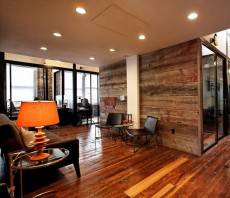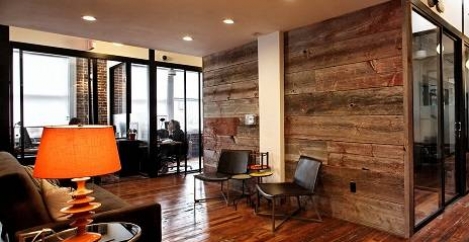March 24, 2016
Coworking spaces not just suited to start-ups with Millennial occupants 0
 The rise in popularity of coworking spaces has been largely attributed to growing demand from creative and tech start-ups for shared workplaces that are cost-effective alternatives to traditional office leases. But there’s new evidence from the US that coworking spaces could also be eminently suitable even for larger occupiers, and especially in costly metro areas such as New York, San Francisco, Los Angeles and Boston. According to a new report from CBRE Group a number of misconceptions that have perhaps kept larger occupiers away from extensive use of coworking facilities do remain, including that this type of space is priced at a premium compared with traditional leases; that it is only utilized by entrepreneurs and small businesses; and that the users are exclusively post-college millennials. Yet CBRE’s report found that these assumptions are not accurate.
The rise in popularity of coworking spaces has been largely attributed to growing demand from creative and tech start-ups for shared workplaces that are cost-effective alternatives to traditional office leases. But there’s new evidence from the US that coworking spaces could also be eminently suitable even for larger occupiers, and especially in costly metro areas such as New York, San Francisco, Los Angeles and Boston. According to a new report from CBRE Group a number of misconceptions that have perhaps kept larger occupiers away from extensive use of coworking facilities do remain, including that this type of space is priced at a premium compared with traditional leases; that it is only utilized by entrepreneurs and small businesses; and that the users are exclusively post-college millennials. Yet CBRE’s report found that these assumptions are not accurate.
“There are a number of ways large occupiers can use shared workplaces to meet their needs, including to access new markets, attract and retain talent and introduce innovation,” said Julie Whelan, America’s head of occupier research, CBRE.
“Contemporary shared workplaces can be powerful tools to enhance the culture and values of an organization. Whether it be to promote innovative thinking or access a better work experience for employee retention, contemporary shared workplaces offer diverse ways to support the needs of occupiers of all sizes.”
Despite the perception that coworking spaces come at a premium, CBRE found that they can actually be cost-effective alternatives to traditional office leases in major gateway markets. An example of this trend is illustrated by a comparison of options for a 10-person office in Washington, D.C., which shows that shared workplace users can save more than 15 percent over traditional leases. The average annual cost for a 10-seat requirement in a coworking space is between $52,000 and $84,000, compared with $72,000 and $92,000 for the same requirement at a traditional leased space.*
“There are also a number of intangible benefits to consider besides the headline lease expense when comparing the costs of shared workplaces with those of traditional leased offices, including the removal of the negotiating process, which improves speed to market, flexibility to scale the requirement as the occupier’s needs grow and built-in amenities,” said Ms. Whelan.
As to the misconception of shared workplaces offering facilities that cater only to small business and start-ups, a recent CBRE survey of large global occupiers found that more than 40 percent of respondents are using or considering shared workplaces, with a small, but growing, segment focused on coworking specifically.
Larger organizations are starting to initiate use of this space model to satisfy the requirements for specific departments or project teams that may not fit the cultural mould of the legacy office space. CBRE’s recent occupier survey revealed that today’s labour force puts a high degree of importance on the desire for a great “work experience” – specifically, the functionality of the workplace, the freedom of work style and the sense of community between related organizations.
“Co-working spaces give optionality in location and flexibility in lease term, while also embracing a more progressive approach to design. Their focus is on integrating what’s new and cool—inspiring common areas and sought-after amenities—with highly functional space to get work done,” said Lenny Beaudoin, senior managing director, Workplace Strategy, CBRE.
Finally, while contemporary shared workplaces often have a youthful vibe, they are not all dominated by post-college millennials. About 63 percent of users were 31-50, with a median age of 40, according to CBRE Research’s survey of co-working. Fewer than 25 percent of surveyed users were millennials.
The CBRE report, the second in a four-part series, can be accessed here.













